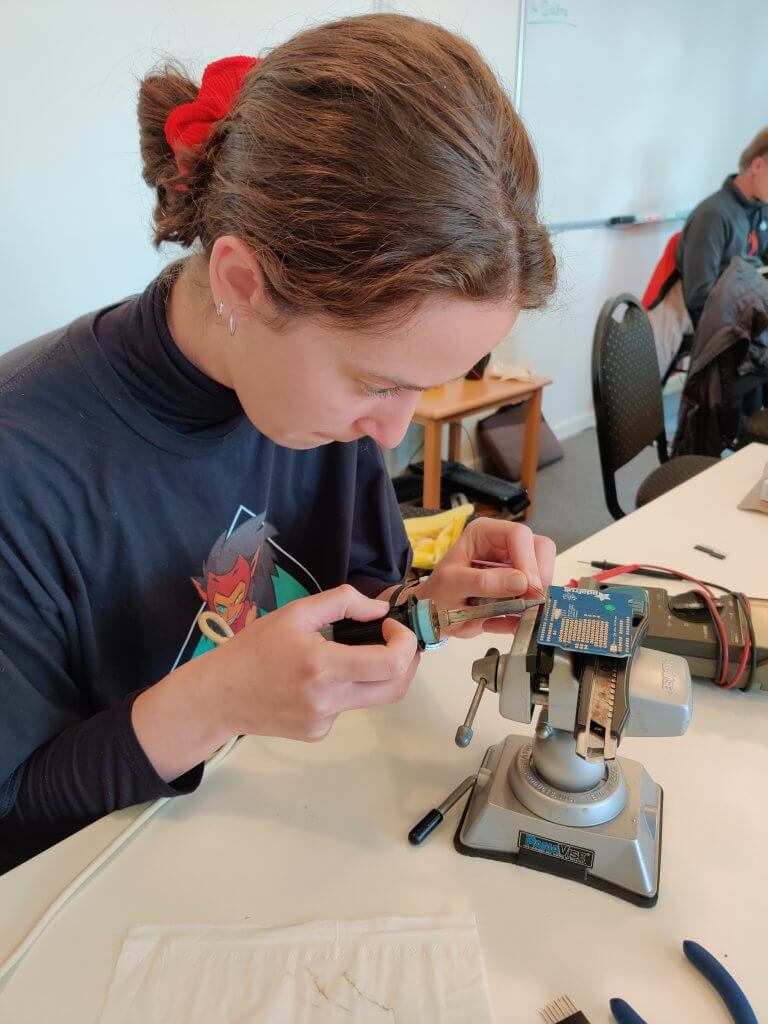
Recap: PRODIGY field school on Quadra Island
– By Isabelle Lao –
In May 2022, leading faculty from the University of British Columbia (UBC), Victoria (UVic), and Waterloo (UWaterloo) held a weeklong field school at the Hakai Coastal Ecological Observatory on Quadra Island as a part of the Pacific Rim Ocean Data Mobilization and Technology (PRODIGY) field school.

PRODIGY is a joint program led by 11 principal investigators with expertise ranging from geophysics to oceanography, statistics, and computer science. As Program Director, Dr. Philippe Tortell, describes, “PRODIGY’s purpose is to provide students with unique, value-added training and research opportunities, not just in academia but also within industry, government and NGO sectors.” Through the Natural Sciences and Engineering Research Council of Canada Collaborative Research and Training Experience (NSERC-CREATE) program, PRODIGY provides training to graduate students across the entire ocean-data life cycle: deploying and testing new ocean sensors, data analysis and assimilation, numerical modeling and forecasting, and engaging decision-makers and stakeholders to drive data-informed ocean policy and management.
Leading up to the field school, students participated in a semester-long ocean data course with a different thematic focus and instructor each week. While most of the topics concerned data analysis techniques, the field school was an opportunity to explore an area that most students did not have a lot of experience in: instrumentation.

Led by Dr. Rich Pawlowicz from UBC, students explored the ocean data life cycle from acquisition to analysis and communication. Working in groups, students began by proposing a sensor then programmed them using Arduinos to deploy in the field. As noted by Dr. Susan Allen, “what you want to measure is different from what you’re actually measuring” for many of the sensors, posing a challenge to students. As an example, seawater salinity measurements are actually based on direct measurement of electrical conductivity. This requires appropriate calibration and quality-control measures. Each student group had to address these complexities, disentangling the influence of measurement noise and calibration issues against true environmental variability. For example, a group that made a seismograph picked up a lot of noise from incoming ferries.
The group projects ranged from measuring the height of waves to the turbidity of water. Ocean Light Group member, Birgit Rogalla, says that she enjoyed working with her hands, and learned a lot about troubleshooting sensors when they calibrated their nephelometer. Her group was successfully able to submerge their home-made nephelometer 8 meters into the water, with design help from Sam Stevens. PhD student Shumin Li designed a wave buoy with his group to measure wave height and frequency using accelerometer sensors and a lab drifter. He recalls encountering significant challenges with a similar project in his undergraduate studies, and was excited by his group’s success this time around due to the collaboration and guidance from his group members and instructors.

The week culminated in presentations from each group where they demonstrated their findings: what worked, what didn’t work, and most importantly what they learned. As one of the first field school undertakings after the pandemic, many participants commented on the excitement and energy of working with people in person. Dr. Allen recalls watching the students communicate patiently with one another, collaborate, and build relationships, all while having fun.
With all the learnings of the first field school, PRODIGY is still only a new program with five years still to go in the project timeline. Additionally, this project includes a formal collaboration with faculty and students at the Universidad de Concepción in Chile, working to examine similar processes in the coastal features of British Columbia andChile, including deoxygenation, acidification and seismic hazards. In January, a second field school will be conducted at the Millenium Institute of Oceanography in Chile with members of the Quadra cohort as well as the second cohort. As Dr. Tortell summarizes very succinctly, ‘To use ocean resources properly, we need people who are high level objective thinkers’ and this is exactly what PRODIGY has set out to do, by equipping students with the ability to conceptualize the data they need, design and deploy appropriate sensors to collect observations, and then use the data and associated models to support sustainable use of ocean resources.

This article was written by Isabelle Lao with interviews and input from Dr. Philippe Tortell, Dr. Susan Allen, Dr. Rich Pawlowicz, Birgit Rogalla, and Shumin Li.
Isabelle Lao is the Bulletin Editor for the Canadian Meteorological and Oceanographic Society. She received her BSc from the University of British Columbia in 2021 with a degree in Chemistry and Oceanography. She currently works at the Pacific Climate Impacts Consortium as a Climate Data Analyst.
